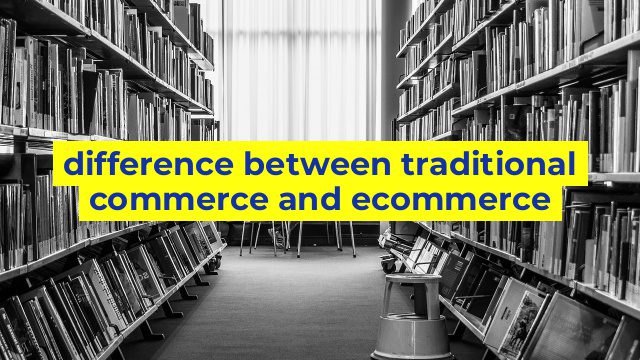Understanding the Differences between Traditional Commerce and Ecommerce
The world of business is continually evolving, and one of the areas that have seen significant changes is commerce. With the advent of technology, we have witnessed the rise of ecommerce as a viable option for businesses looking to expand their customer base and grow their brand. However, while ecommerce has become increasingly popular, traditional commerce still plays a significant role in the business landscape. In this article, we will explore the differences between traditional commerce and ecommerce.
What is Traditional Commerce?
Traditional commerce refers to the trading of goods and services that are completed through face-to-face interactions between buyers and sellers. It includes activities such as visiting a brick-and-mortar store or business to make a purchase, attending trade shows to source products or services, and direct mail marketing to businesses or consumers. Traditional commerce is characterized by the customers’ ability to touch and examine the products, negotiate the price, and leave with the products immediately.
What is Ecommerce?
Ecommerce, on the other hand, refers to the buying and selling of goods or services through electronic channels such as the internet or mobile applications. It includes activities such as online shopping, mobile commerce, and electronic payments. Ecommerce is characterized by the convenience it offers to customers, who can purchase products from anywhere at any time without leaving their homes.
The Differences between Traditional Commerce and Ecommerce
One of the significant differences between traditional commerce and ecommerce is the physical presence. With traditional commerce, customers can physically visit a store and examine the products, while with ecommerce, customers can only rely on product images and descriptions. Traditional commerce also provides the opportunity for face-to-face communication, while ecommerce relies mostly on virtual communication channels.
Another difference is the location. With traditional commerce, businesses must have a physical presence in a specific location, while ecommerce eliminates the need for a dedicated physical space. Ecommerce businesses can operate from anywhere, making it easier to expand their customer base across geographical locations.
There is also a difference in the cost of running the businesses. Ecommerce businesses have lower overhead costs since they don’t need to pay rent for a physical store, and they can also automate most of their processes. Traditional commerce, on the other hand, must consider expenses such as rent, inventory management, and employee salaries.
Finally, traditional commerce still appeals to some customers who prefer the experience of physically examining and purchasing products. On the other hand, ecommerce offers the convenience of shopping from home, and customers can choose from a wider range of products and services.
Conclusion
In conclusion, traditional commerce and ecommerce have their unique advantages and disadvantages. While traditional commerce offers the experience of physically examining products and face-to-face communication, ecommerce provides convenience and the ability to operate from anywhere. As the business world continues to evolve, businesses must keep up with the changing times and adapt to the needs and preferences of their customers, whether via traditional commerce or ecommerce.
Table difference between traditional commerce and ecommerce
| Traditional Commerce | Ecommerce |
|---|---|
| Requires physical presence of buyers and sellers | No physical presence required |
| Limitations on business hours and availability | Online businesses can operate 24/7 |
| Higher overhead costs due to rent, utilities, and employees | Lower overhead costs due to an absence of physical storefronts and fewer employees |
| Limited customer reach | Global customer reach through the internet |
| Slower transaction times and delivery of goods | Fast transaction times and faster delivery through express shipping services |
| Difficulty in tracking customer behavior and preferences | Easier tracking of customer behavior and preferences through website analytics |
| Greater opportunity for face-to-face customer service and support | Limited opportunity for face-to-face customer service and support |

